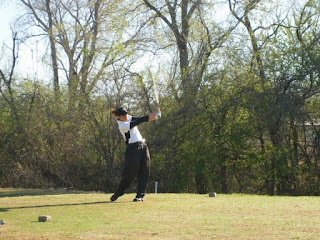The Power of WAIT!
This past summer I had the opportunity to go to the Level 1
PECS course. PECS stands for Picture Exchange Communication System. It is an
augmentative and alternative mode of communication for a wide variety of
patients.
One topic that was briefly covered was “wait time.” I am so
thankful that I was able to begin implementing this into my practice. I can’t
tell you how many children I have on my caseload that will grab toys without
permission (which I typically like to turn into a language opportunity). Out of
these children that want things immediately there are several that will begin
to have a behavioral breakdown due to not receiving their desired
item/object/attention immediately.
How often have you seen this scenario occur?
Child: (Going to the slide unsupervised while mom and
therapist talks).
Mom: “No no you need to wait until we are done talking”
Child: (Continues to go to slide).
Mom: “No no you need to wait.” (Mom begins to approach
child).
Child: (Anticipates his/her mother stopping him/her from
going down the slide and more aggressively climbs up the slide and/or goes down
the slide anyway).
Mom/Therapist: (Trying to stop situation and takes child by
hand).
Child: (Begins to tantrum characterized by yelling,
screaming, etc.).
End Result: Child being carried out of therapy by patient’s
mother or mother caving in and allowing child to slide despite child having
tantrum.
What did the child learn in either end result? One, they
learned that when mom or therapist says, “wait” they will most likely not get
their reinforcement. Or two, if they throw a tempter tantrum despite mom or
therapist saying, “wait” they will still get what they want. Either way this is
not the lesson we want to teach our children. We want to teach that when you
wait for a set amount of time you will get a positive reinforcement. This
reinforcement could be an object, action, or some sort of social reinforcement.
We have to give our children the opportunity to learn what a positive waiting
experience feels like!
As you can see above this is the wait card that I created for
my patients. I try to make the wait card in the child’s favorite color to
automatically reinforce a positive emotion. My wait cards are made out of a cut
out circle of foam with bold writing.
I start with purposefully putting out toys that the patient
may have interest in. When the child reaches for the toy I quickly give them
the “wait card” and state “please wait,” a half of a second later I reinforce
the patient with their desired object, praising them for waiting. Each child is different and you will have to
feel out how much you can increase the wait time for each child. You may do
several trials at a half of a second or you may decide to try 5 seconds, then
10 seconds, 30 seconds, etc.… The most important thing about this process is to
create the act of waiting into a positive experience and with reassurance that
their desired object, action, or social reinforcement will be available to
them.
For my children that are up to a minute wait time or above I
personally use a timer that looks like the picture below. The red slowly
decreases as the time passes, this gives a great visual reinforcement and
expectation to how long the wait time will last, wait time is not this unknown
time that could feel like eternity, wait time has an end with a positive
result. I have also found that all of my children that I work with enjoy
holding their wait time card. When they have finished their wait time they turn
it back into me and they receive their reinforcement for waiting along with
praise.
With my extended trials I am sure to set out my entire
expectation such as,
“You want the toy car? I would like
you to please wait for five minutes. During these five minutes you will sit
calmly in the chair with still and safe feet. Your mother and I may be speaking
during this time. When wait time is over you will get to play with the car.”
During a child’s wait time (after they have had several
successful trials at a particular set time) then I like to either talk with
their parent, play on the iPad or try to talk on the phone. I do this because
it is simulating the real world. When they are waiting at school, in line at a
restaurant, or at home for a reinforcement from their teachers, mothers,
fathers, and playmates that communication partner will most likely be finishing
a project or a conversation they were already doing before the child requested
to do the new activity. They need the real life practice of the attention not
focused directly on them.
So far, with the patients that I have started this with I
have seen and heard wonderful results. One mother told me that she is now able
to use the restroom independently. Her child now waits just outside the door
until she has finished. This mother hasn’t been able to do this for four years.
The ability to wait is such a critical skills for our
children. They need to be able to wait to listen to all of directions, to learn
if an activity is safe or not, to wait there turn in social games, etc.… Now I
am sure there are several methods to teach waiting, this is just one that I
have personally found effective. What techniques have you used to teach wait
time?






Comments
Post a Comment